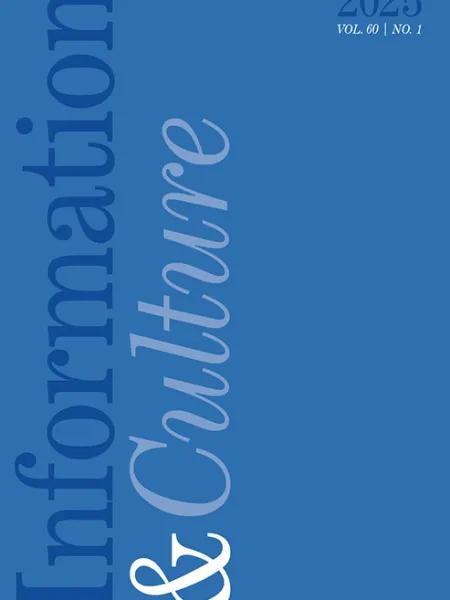Information & Culture is an academic journal printed three times a year by the University of Texas Press. It publishes original, high-quality, peer reviewed articles examining the social and cultural influences and impact of information and its associated technologies, broadly construed, on all areas of human endeavor. In keeping with the spirit of information studies, we seek papers emphasizing a human-centered focus that address the role of and reciprocal relationship of information and culture, regardless of time and place.
The journal welcomes submissions from an array of relevant theoretical and methodological approaches, including but not limited to historical, sociological, psychological, political and educational research that address the interaction of information and culture.
To learn more about our submission standards or submit an article for publication in Information & Culture, visit our submission requirements page.
The latest issue of the journal and the latest book reviews
Why publish with Information & Culture
At I&C, we recognize the efforts authors put into their manuscripts and the choices you have when deciding where to submit. Our review process is designed to engage constructively with each author, from the identification of suitable reviewers to the advice and recommendations provided to improve manuscripts. Our online submission system is designed to keep you informed of the process at all stages, through initial consideration, reviewing, revision and eventual acceptance. Our aim is to complete full reviews of papers within 8-10 weeks of initial acceptance. I&C enables green access for authors who are encouraged to share their accepted manuscripts on non-commercial sites.
The journal is included in numerous indexing services such as the Social Science and History of Social Science on the SSCI and the Arts and Humanities Citation Index, among others. Our impact factor ranks us among the top 75 journals in Information and Library Science and among the top 20 in History of Social Science. Our five-year impact factor trend is positive, more than doubling since 2015, and stands at 0.484.

Information & Culture
Printed Three Times a Year
6 x 9
Appx. 128 Pages/Issue
ISSN 2166-3033
E-ISSN 1534-7591

